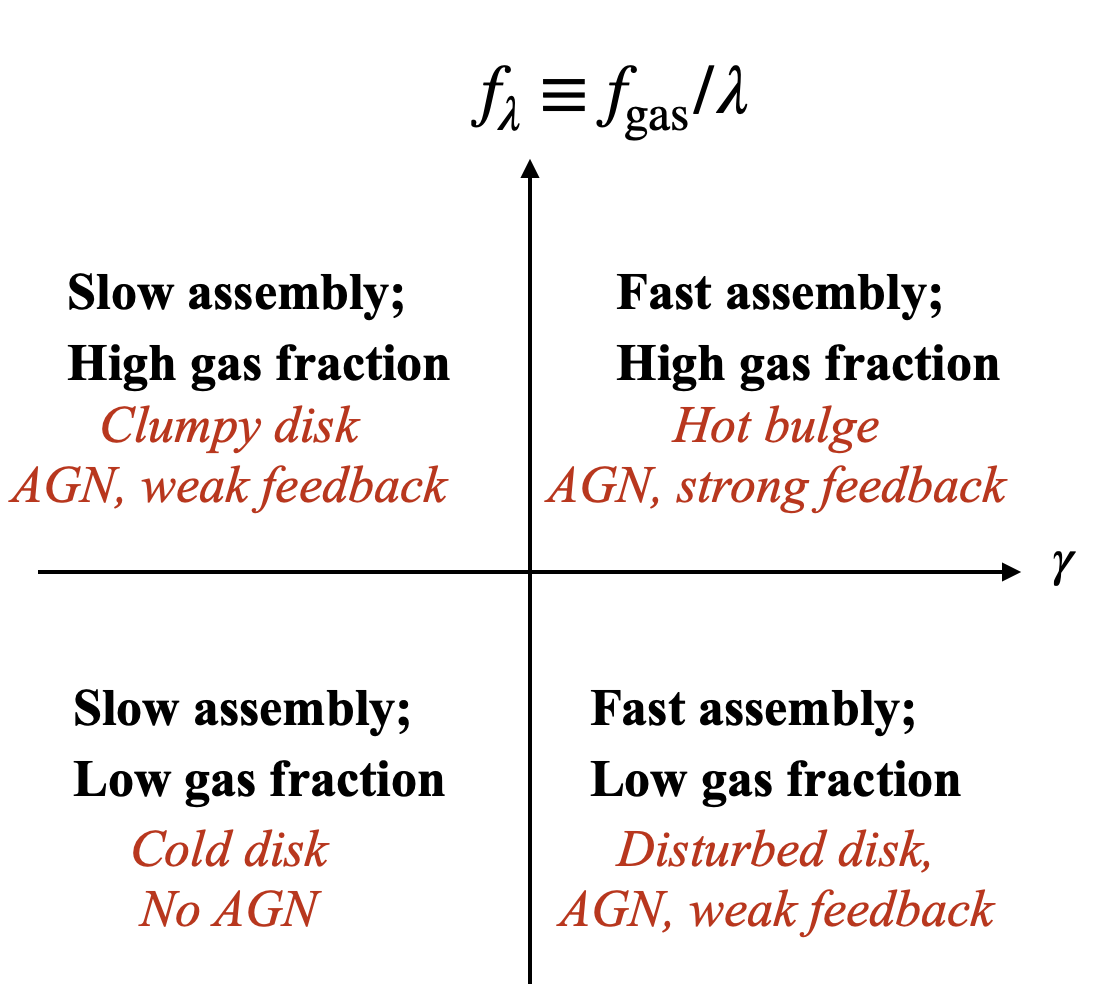Two-phase formation
Speaker: Houjun Mo
What is two-phase formation
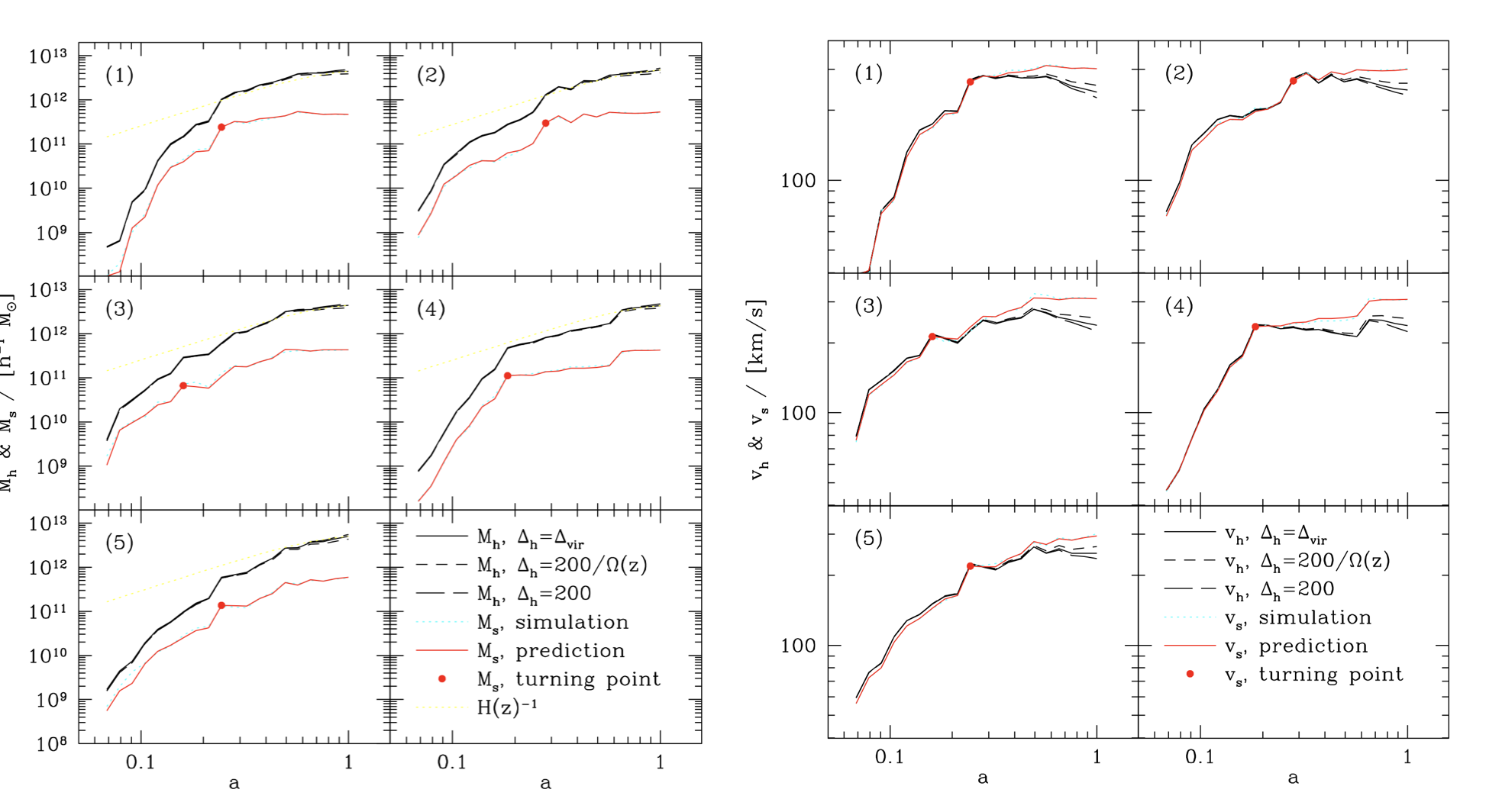
- Phase I: Fast assembly, mass increases rapidly, the gravitational potential change greatly. The entropy of gas increases.
- Phase II: Slow assembly, stilling adding mass but almost no change on the potential.
What does the changes of potential mean?
If the gravitational potential increases, the energy of particles will change rapidly. Only part of gas can settle.
How to separate this two phases
Relative to Hubble expansion rate:
: phase I : phase II
The gas component
Critical halo mass
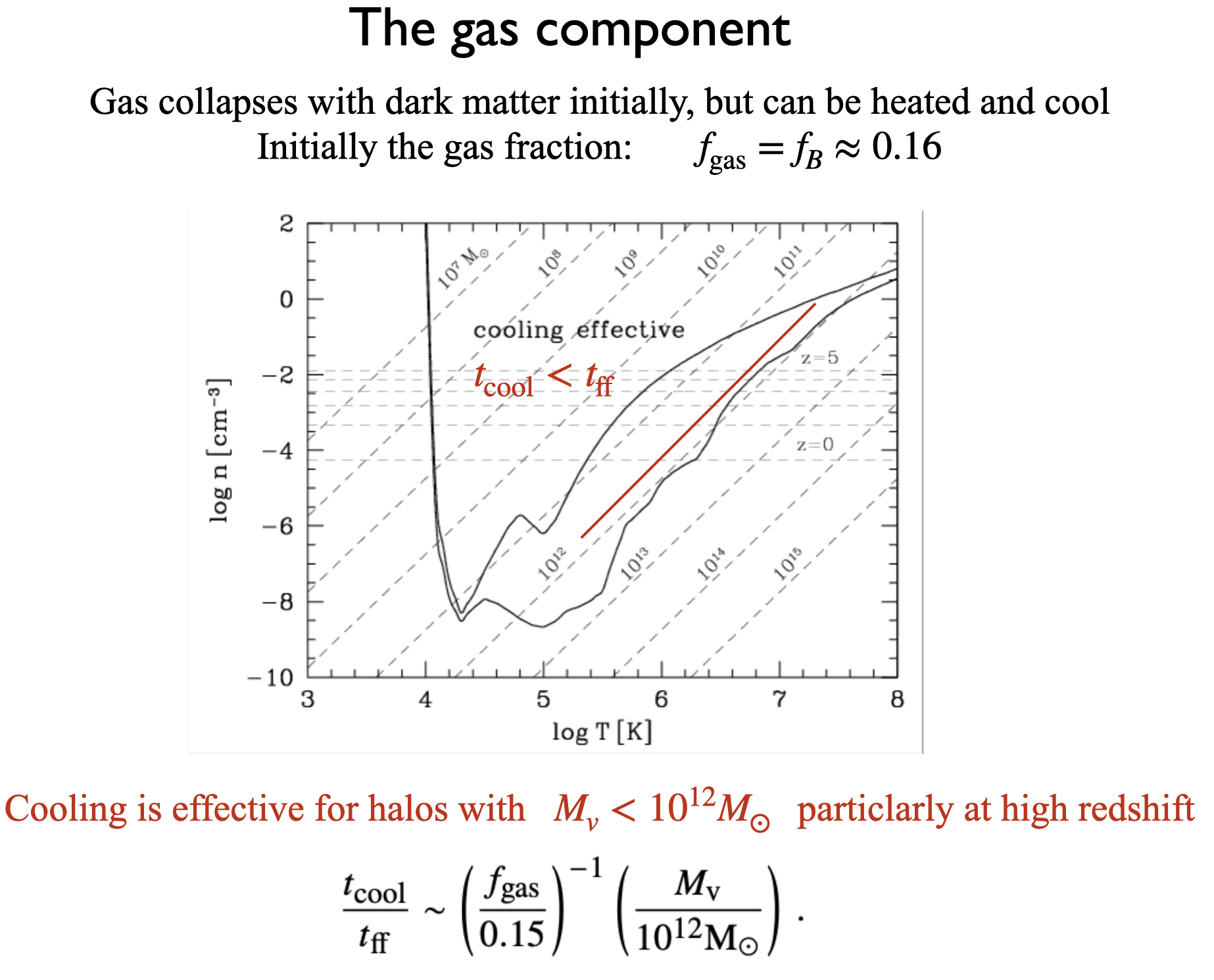
Collapse to form self-gravitating clouds (sgc)
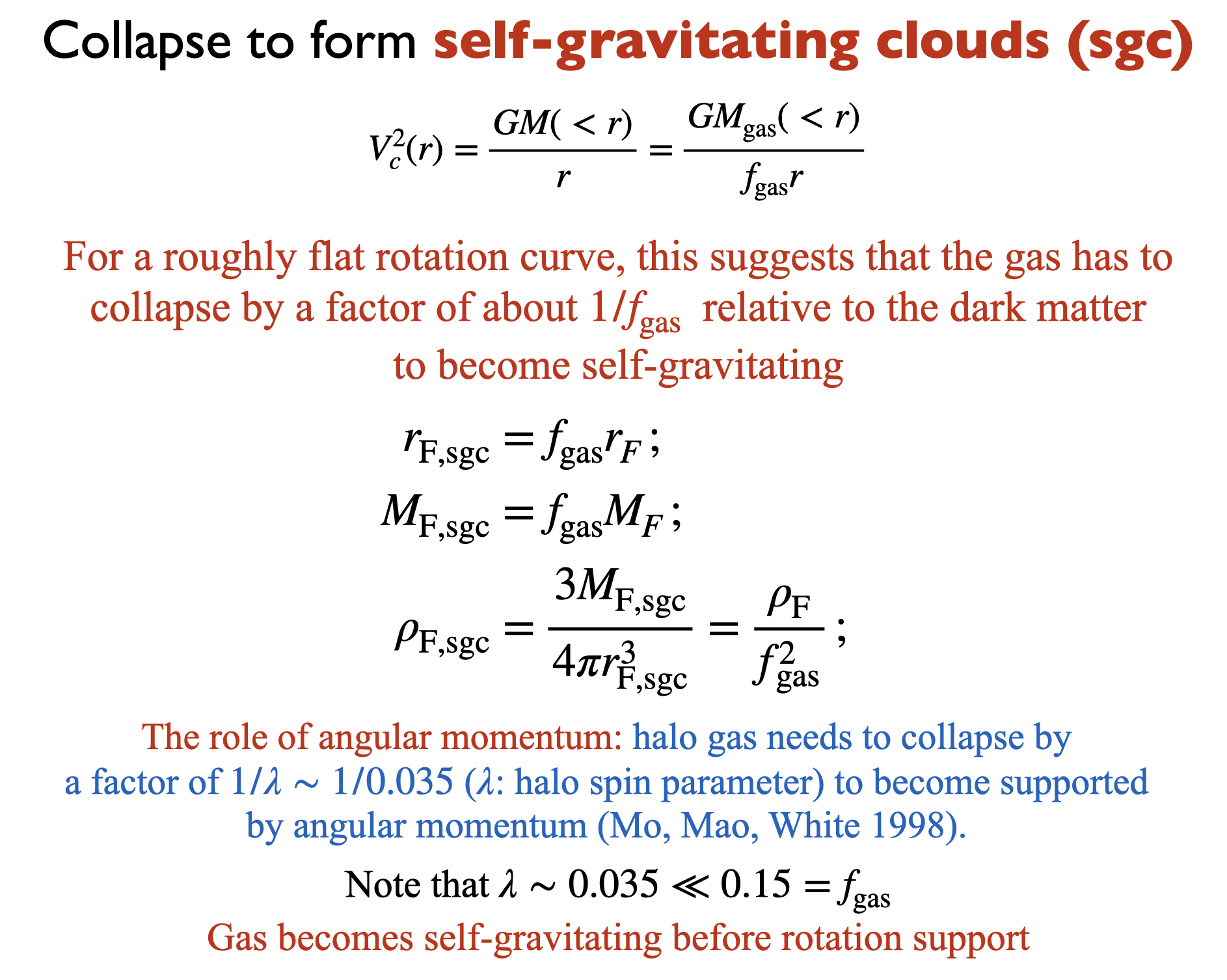
The extent of gas should be a factor
Turbulence is common
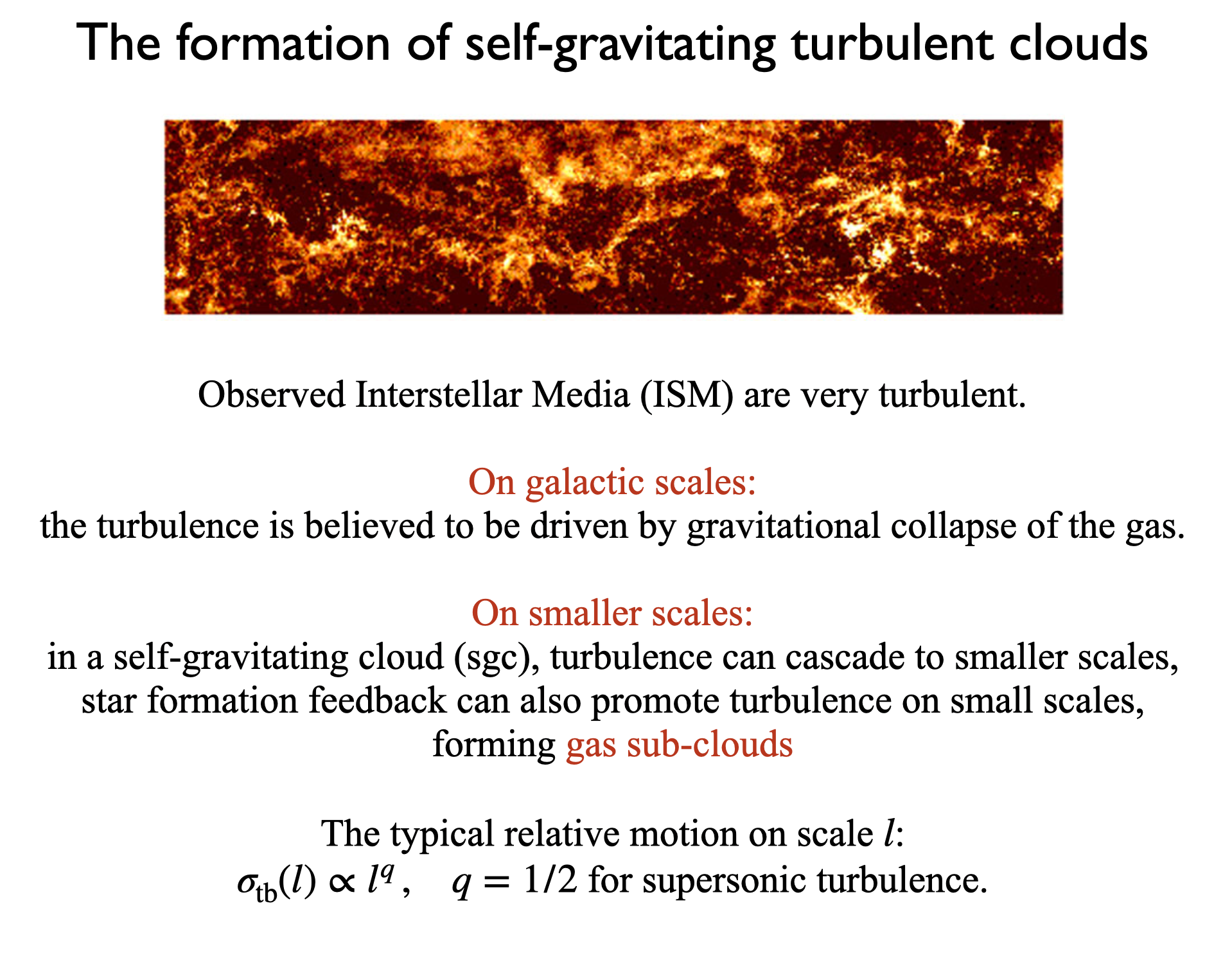
Sub-clouds
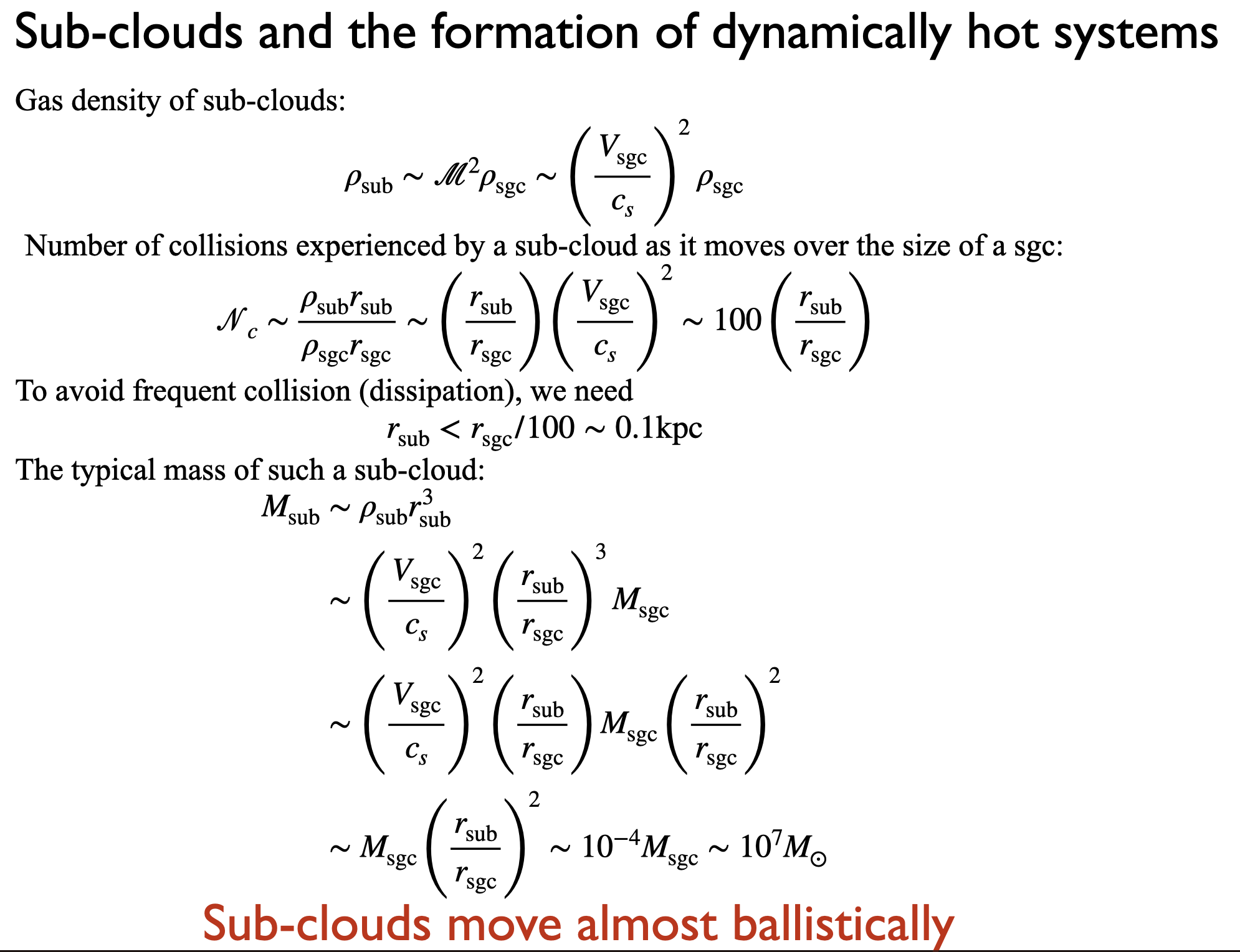
Note that there are two kinds of "clouds": sgs clouds: large, proto-galaxy,
How to feed the SMBH
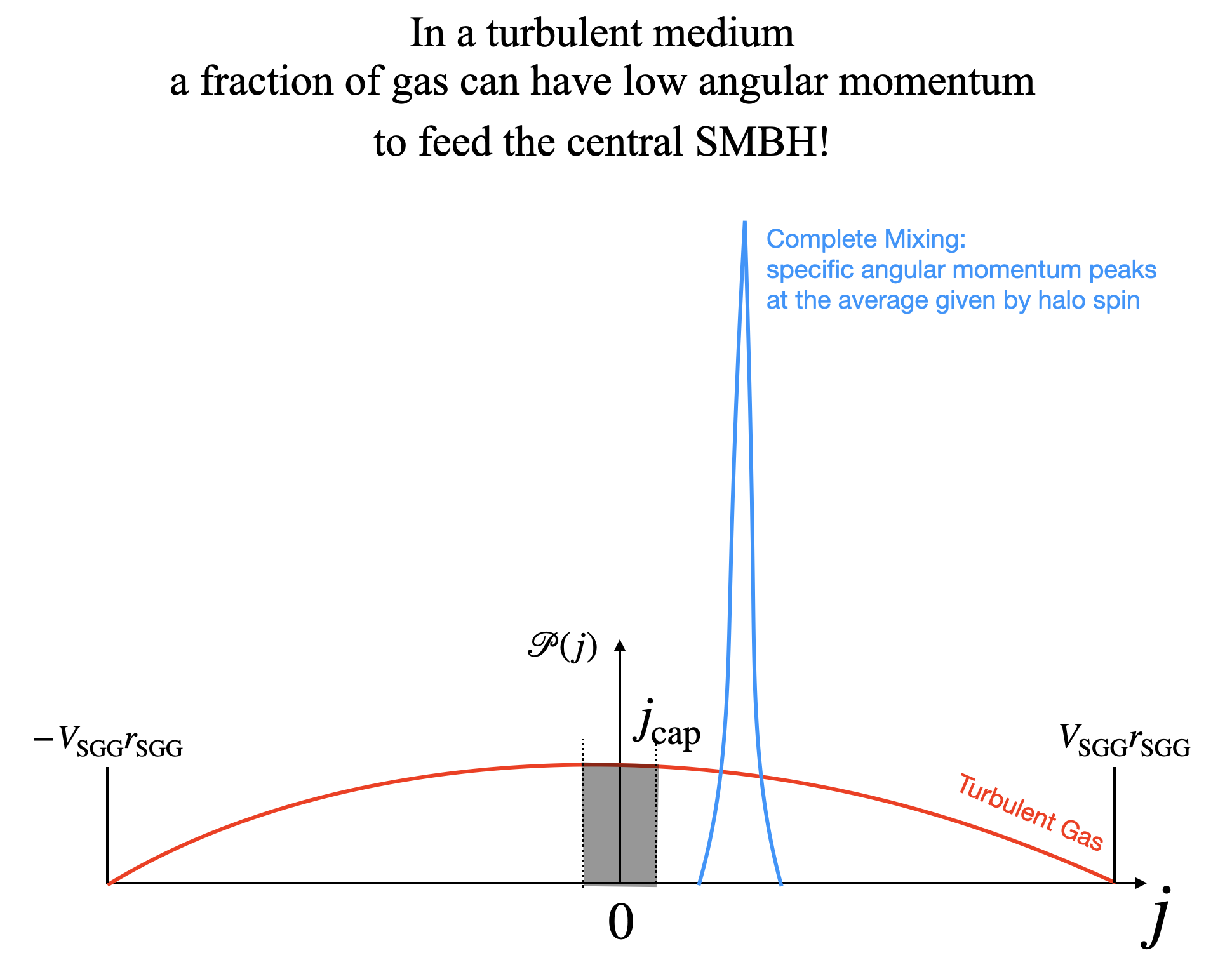
The self-gravitating gas can be turbulent, whose angular momentum obeys the normal distribution. The gas with small angular momentum (
Basic picture
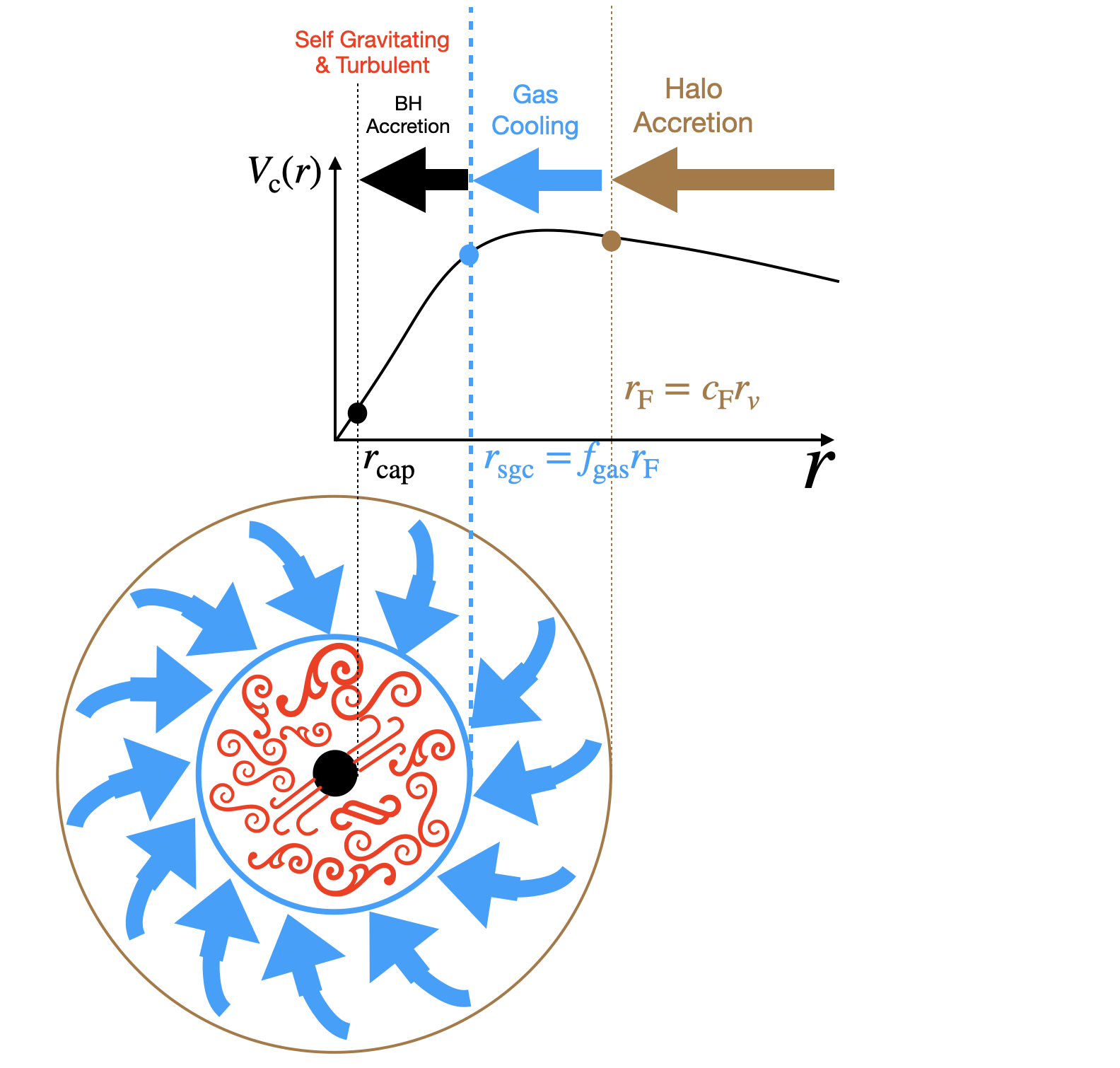
Star-formation
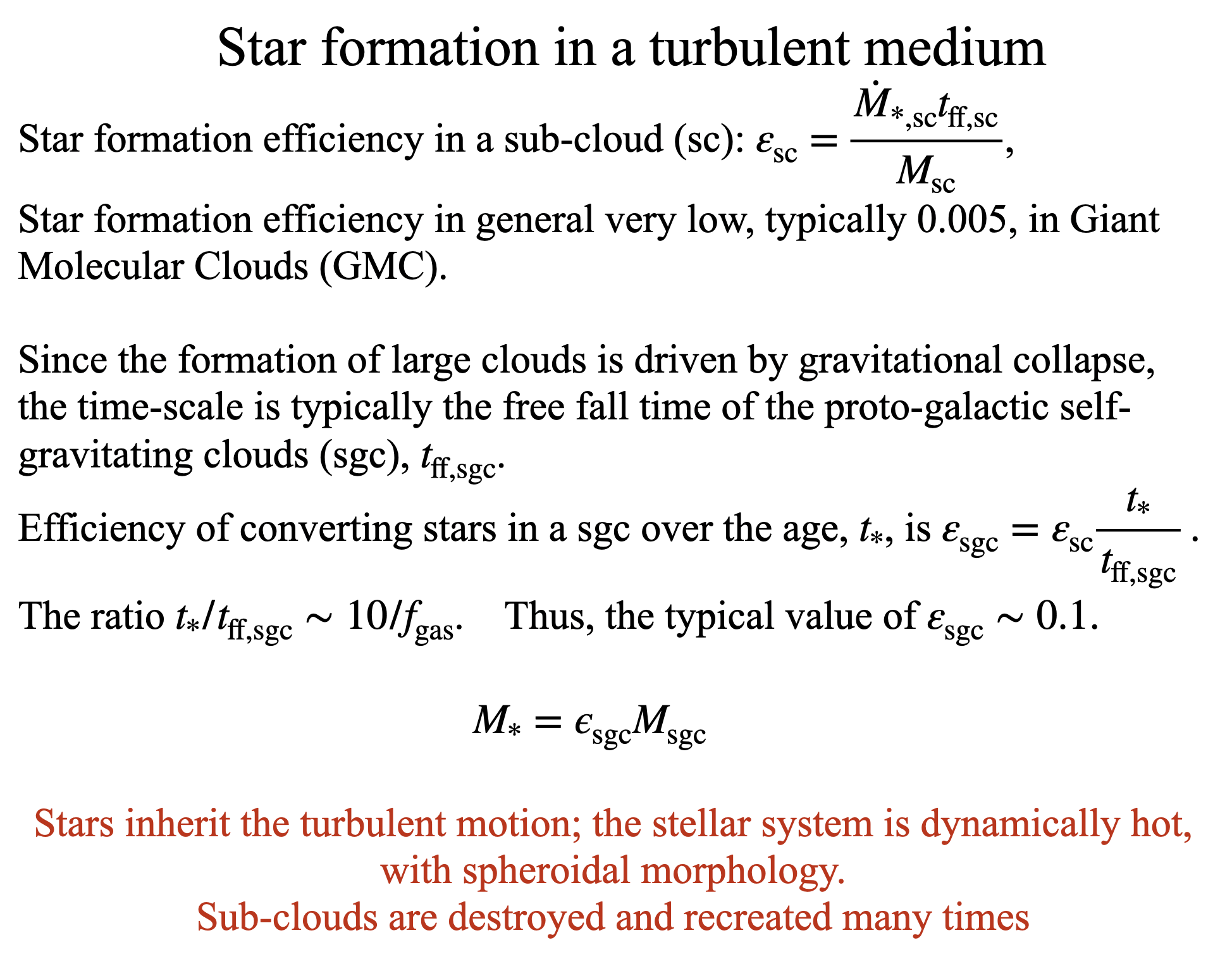
Stars formation in giant molecular cloud-> SNe -> enrichment -> new cooling, cooling rapidly, turbulent, some of gas will have much low angular momentum, and feed the BH -> new star formation.
Disk formation

A simple deduction: At higher redshift, disk is predicted to be more rare by the two-phase scenario, which is supported by the current JWST observation.
Co-evolution in sgc
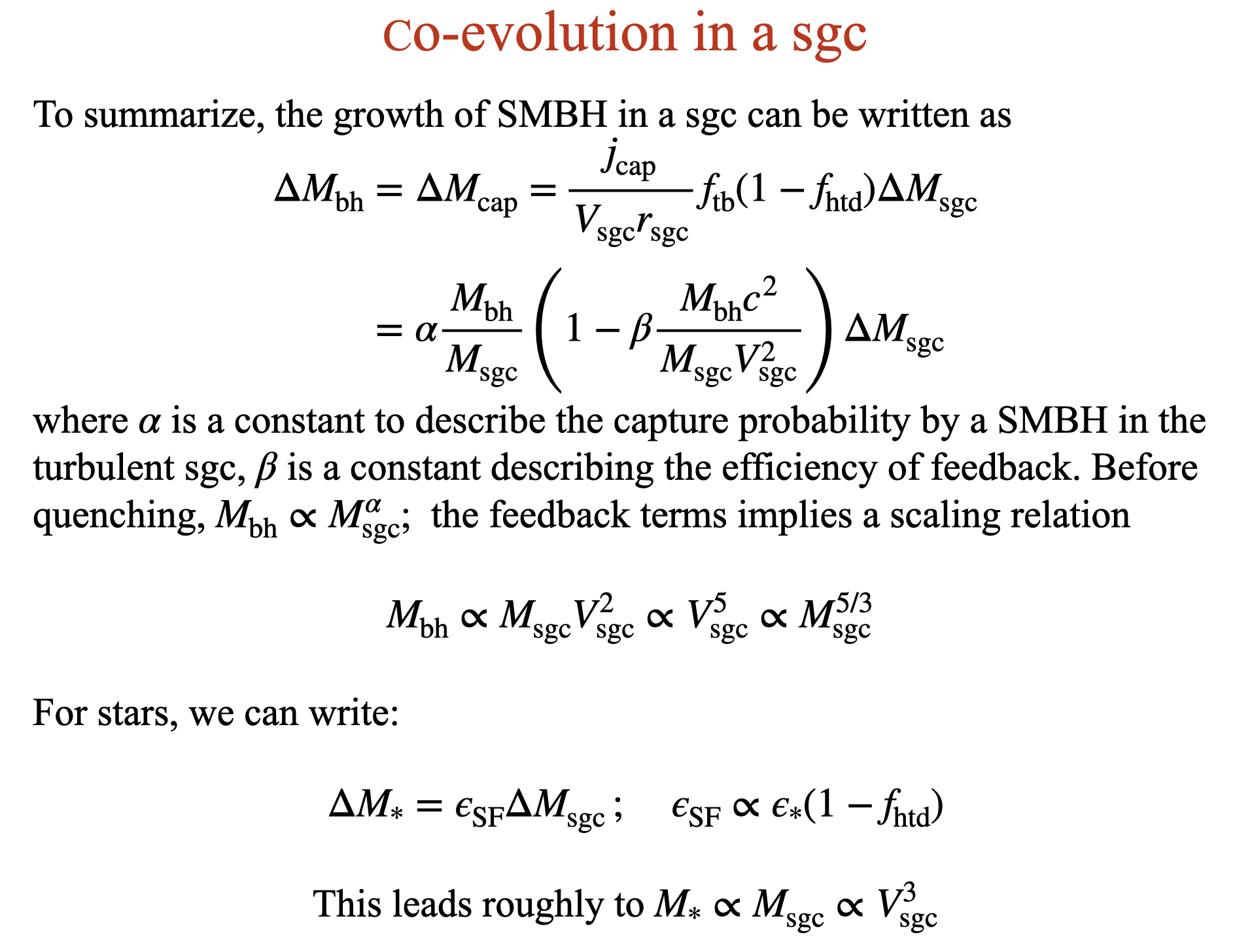
The term inside the parentheses:
if it is
Correlation of BH mass and halo mass is not simply proportional but regulation.
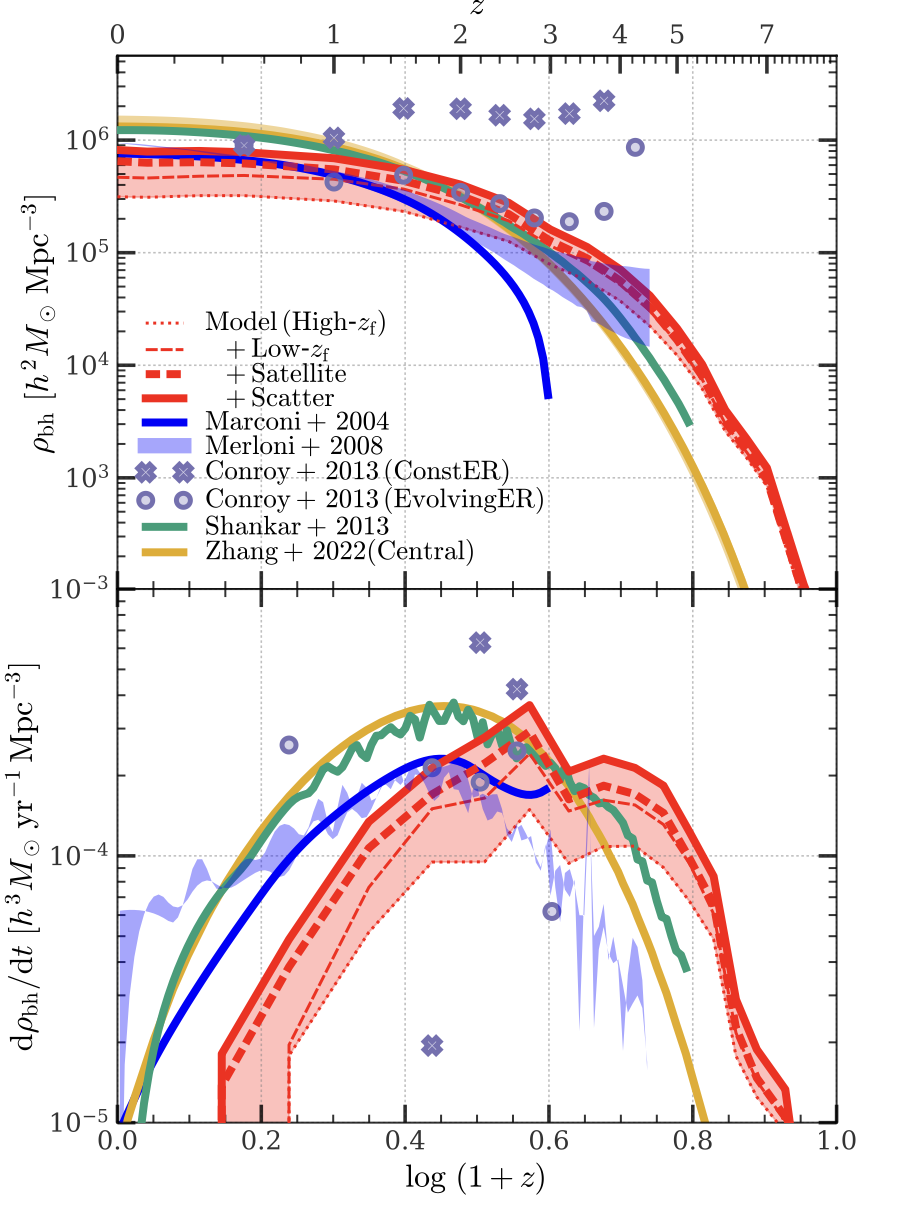
Below z~1: It seems to underestimate the growth of BH. It is because that the model only takes the former phase into consideration, which means that the major growth of BH is in the former phase. There are also can be some local growth channel for BHs.
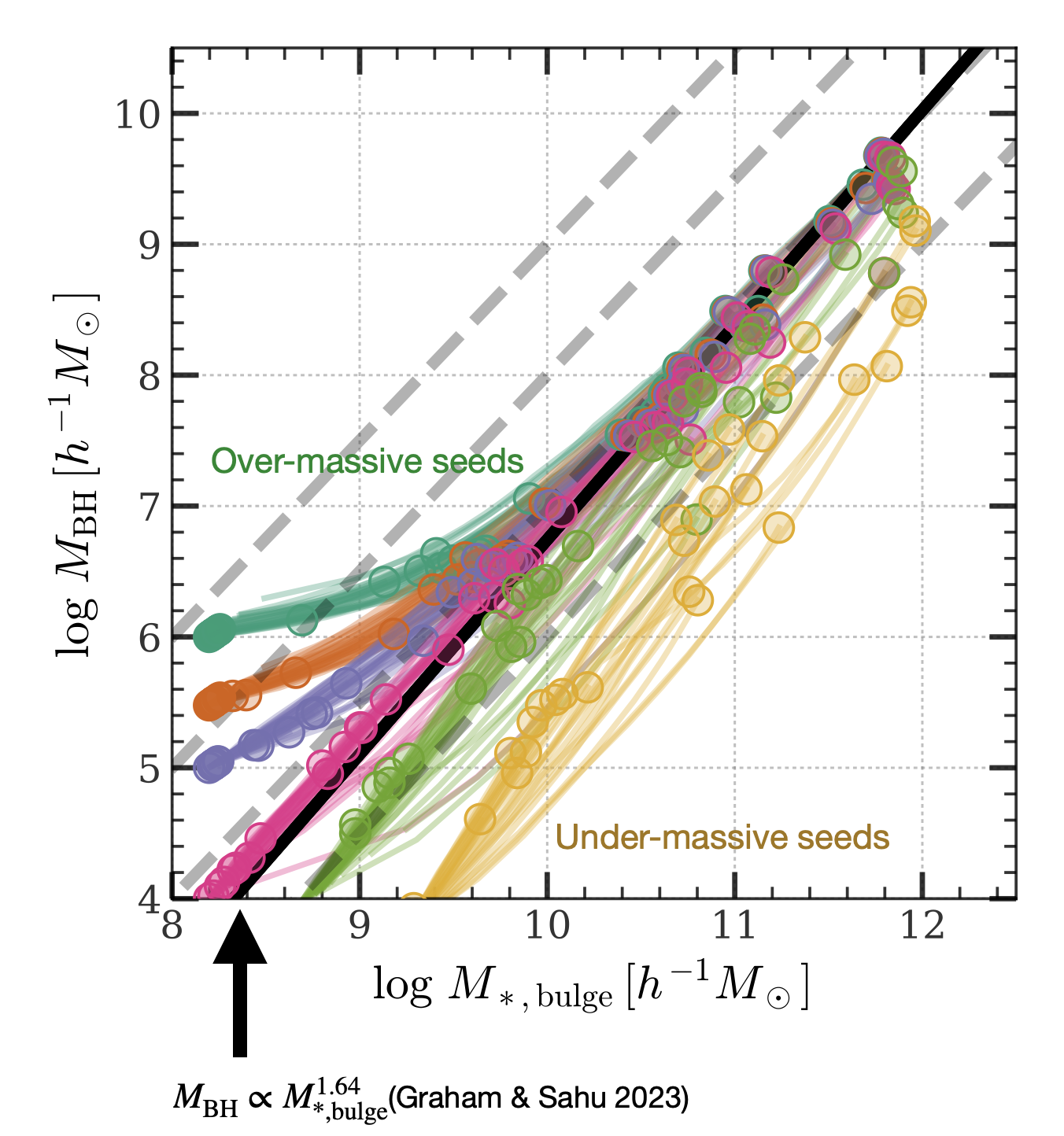
Size-mass relation
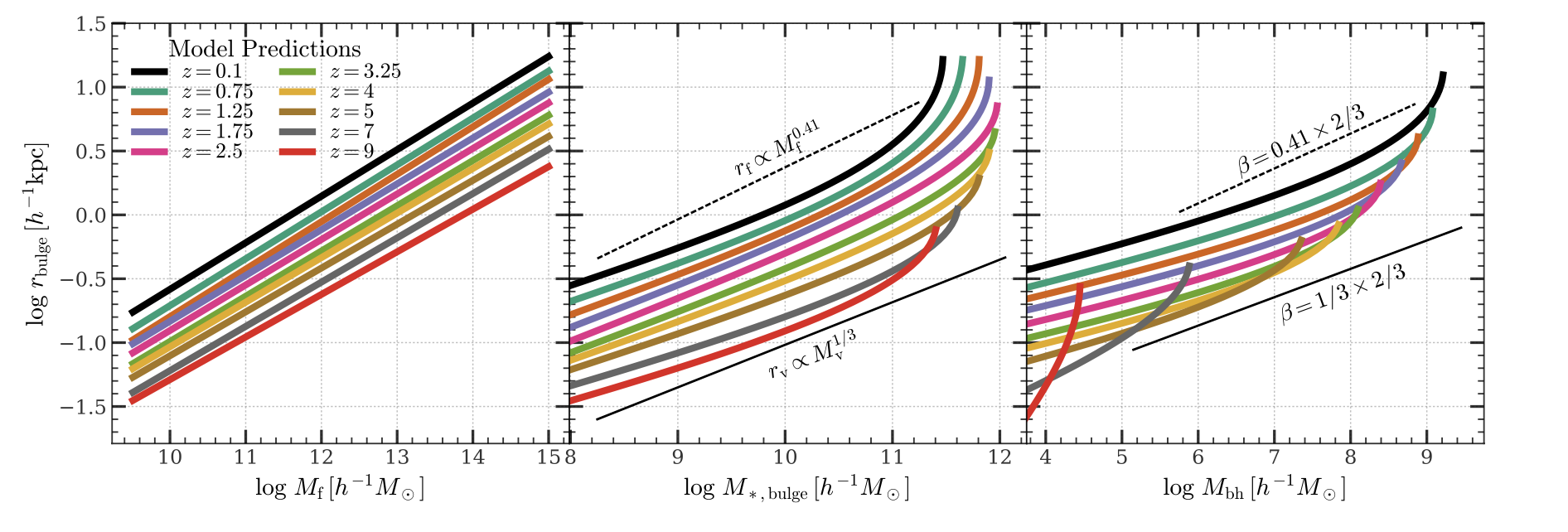
Massive end: size increases but stellar mass not changes, because radiative cooling is ineffective in cluster.
Four quadrant diagram of galaxy formation
